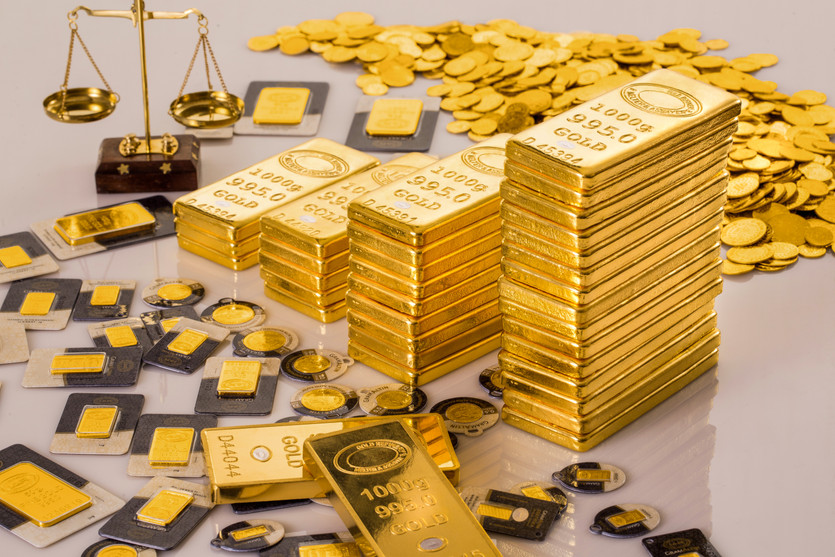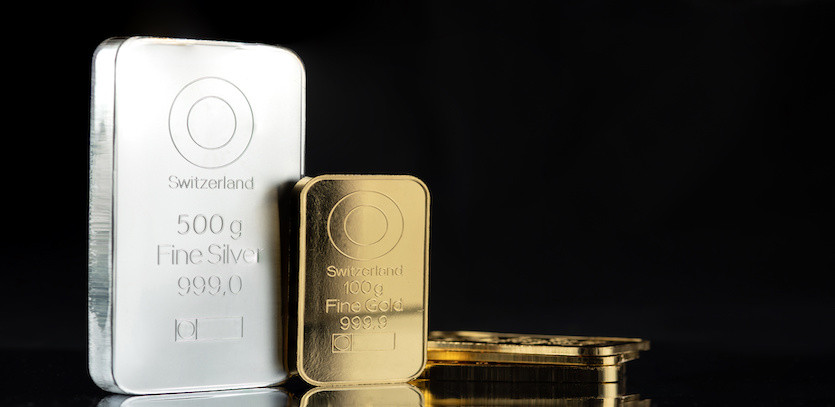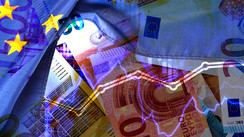A Glittering Legacy: Gold and Silver as Investments
Across millennia, precious metals such as gold and silver have served multiple purposes: currencies, investments, and symbols of prosperity. The allure of these metals to investors stems from their ancient role as a store of value, their minimal correlation with the often turbulent financial markets, and their capacity to act as a bulwark against inflation. On the flip side, investing in precious metals may present liquidity constraints and lack income generation.
As inflation begins to rebound from record lows and financial stability becomes evermore uncertain, it's not surprising to see the spotlight returning to gold and silver. This article offers insights into the best methods of investing in gold and silver and answers common questions that can guide your journey.
Riding the Wave with Gold and Silver ETFs and Mutual Funds
Acquiring silver and gold through financial vehicles shifts some risks, such as storage and insurance, onto others, but it also implies that your investment isn't physically tangible. Today, investors can access an array of gold and silver funds through regular brokerage accounts.
Some funds act as proxies for direct ownership of silver or gold, only holding bullion of those specific metals, while others spread across the sector with a portion held in other precious metals. These funds aim to mirror the price movements of a particular precious metals index or a specific metal’s price. Depending on their strategy, some funds may hold physical gold and mirror the benchmark price, while others might blend physical gold, options, and futures to imitate the benchmark price of silver or gold. However, the performance of these funds is affected by the fund's expense ratio, and the more active a fund’s strategy, the higher its cost.
Investing in gold and silver funds can be considered an alternative to actual precious metals ownership, devoid of the associated troubles of storage, acquisition, or sale. The fund structure permits more fluidity as you can effortlessly increase or decrease your gold or silver holdings without needing to verify and physically transfer items within the dealer network. Gold and silver funds, while not direct investments, may not always perfectly track the price of physical gold but still offer investors the diversification of physical gold or silver without the overhead costs.
When discussing gold and silver funds, we're focusing on funds providing exposure to physical gold and silver bars, yet offer increased liquidity due to share trading on global markets. There are also funds that invest in shares of companies mining these precious metals.
Delving into Gold and Silver Mining Stocks
The value of gold and silver mining stocks is significantly influenced by the market price of the metals they mine, though the relationship isn't always straightforward. Miners are evaluated based on the quality of their assayed deposits and the feasibility of extraction, which are constantly reassessed as market values fluctuate.
The mining industry has significant segmentation, with junior mining companies in the development and exploration stage. These companies prospect lands with high potential for discovering substantial mineral deposits. Junior mining stocks can be more volatile compared to major mining companies, which usually align more closely with metals prices based on their proven deposits. Major mining companies are also more likely to pay dividends and appreciate modestly when prices are strong.
While pure gold and silver plays exist in both junior and major categories, investors looking to delve into gold and silver mining stocks may find sector ETFs such as the VanEck Gold Miners ETF (DGX) or iShares MSCI Global Silver Miners ETF (SLVP) more appealing. These ETFs can offer a mix of dividend yield and appreciation like the stocks themselves.
Investing in Gold and Silver ETFs and Mutual Funds
Taking an alternate route from direct possession, gold and silver can be acquired through financial instruments like ETFs and mutual funds. This approach mitigates some inherent risks such as storage and insurance, while providing the benefits of asset appreciation. There is a vast array of such funds today, easily accessible via traditional brokerage accounts.
Many of these funds act as surrogates for owning physical silver or gold, by holding bullion exclusively. Others may have a diversified portfolio with a percentage held in other precious metals. These funds aim to replicate the price actions of a particular precious metals index or a specific metal. Some primarily hold physical gold, their prices moving parallel to the benchmark price. Others may follow the benchmark price of silver or gold using a blend of physical gold, options, and futures. The performance of these funds is, inevitably, reduced by the fund's expense ratio, and the more active a fund's strategy, the higher the costs.
Investing in these funds can be considered as owning precious metals without the bother of actual acquisition, storage, or sale. The fund's structure facilitates liquidity, making it simple to increase or decrease your gold or silver holdings without needing to physically validate and ship items around the dealer network. While these funds may not always perfectly track the physical gold price, they offer investors the diversification of physical gold or silver without the associated costs.
When discussing gold and silver funds, it's important to note that they not only offer exposure to physical gold and silver bars but also provide greater liquidity due to the ability to trade shares on global markets. Some funds also invest in the stocks of companies mining these precious metals, which we will delve into next.
Investing in Gold and Silver Mining Stocks
Investments in gold and silver mining stocks are predominantly driven by the market price of the resources they extract. However, the link isn't always straightforward. Miners are assessed by the quality of their identified deposits and the feasibility of extraction, a judgement that is continually reassessed as market values fluctuate.
Furthermore, the mining industry is notably segmented, with junior mining companies still in development and exploration phases. These companies seek lands with high potential for discovering extensive mineral deposits. Junior mining stocks are typically more volatile than those of major mining companies, which usually align more closely with metal prices due to their proven deposits. Larger mining companies are also more likely to pay dividends, supplemented by modest appreciation during strong price periods.
Investors may find sector-specific ETFs, like the VanEck Gold Miners ETF (DGX) or iShares MSCI Global Silver Miners ETF (SLVP), to be a preferable choice when investing in gold and silver mining stocks. These ETFs can offer a blend of dividend yield and appreciation, akin to the stocks themselves. For those set on investing directly into specific stocks, it is vital to understand the industry and familiarize yourself with preliminary feasibility studies, reserve estimates, and applicable valuation methods.
Investing in Gold and Silver Futures and Options
Another route to gain exposure to gold and silver is through financial derivatives such as futures and options. Futures contracts allow investors to leverage long or short exposure to metals prices on centralized exchanges. One unique risk associated with futures contracts is the potential obligation to accept the delivery of the underlying precious metals if the contract expires and is not rolled over into a later-dated contract.
Traders typically use gold futures to make leveraged bets on gold prices, with no intention of taking delivery of the physical metal. As with any leveraged strategy, the potential gains and losses from trading precious metals via futures are amplified.
Similarly, gold and silver options are derivative contracts based on gold and silver futures or physical metals prices. These options require less capital, allowing for increased leverage. The risk is limited to the cost of the option contract itself, while the potential gains are theoretically unlimited.
Before embarking on any investment journey, careful research, due diligence, and an understanding of your financial goals and risk tolerance is paramount. Precious metals can be a powerful tool for portfolio diversification and a hedge against inflation, but the unique risks and costs associated with these investments must be understood and carefully considered.
Cryptocurrencies as Digital Gold and Silver
Over the past decade, the investment world has seen a significant rise in the popularity of cryptocurrencies, like Bitcoin and Ethereum. Some investors view these digital assets as "digital gold" and "digital silver," because they offer a limited supply, just like precious metals.
Bitcoin, often referred to as digital gold, has a maximum supply of 21 million coins. This limited supply, combined with a decentralized system where no single entity can control or manipulate the currency, provides a degree of scarcity akin to gold. This has led some to view Bitcoin as a potential store of value and a hedge against inflation, much like gold.
However, investing in cryptocurrencies is inherently volatile, and the market is still relatively new and speculative. Prices can swing wildly based on investor sentiment, making it a riskier investment. Furthermore, while some see cryptocurrencies as a form of digital gold or silver, others dispute this analogy because, unlike gold and silver, cryptocurrencies do not have a physical presence and their value is not backed by any tangible asset.
It's also worth noting that the regulatory landscape for cryptocurrencies remains uncertain, with different countries implementing various levels of regulation and oversight. This could potentially impact the future value and acceptance of cryptocurrencies.
In conclusion, investing in gold, silver, and other assets such as cryptocurrencies requires careful consideration of your investment goals, risk tolerance, and market understanding. Diversification, thorough research, and informed decision-making are crucial when entering any investment. Remember that all investments come with a certain level of risk, and it's essential to understand these risks before committing your capital.
The Old-fashioned Way of Investing: Physical Forms
Investing in physical gold and silver can be conducted through three primary forms: bullion, coins, and jewelry. Each carries unique attributes and considerations for investors.

-
Gold and silver bullion are high-purity bars of these metals, usually traded through a reputable dealer. The bars range in size from under an ounce up to 400 ounces, making storage and insurance important factors. Although bullion is considered the purest physical form of gold or silver, they come with high barriers like storage costs, insurance, and the risk of theft.
-
Bullion coins, such as American Gold Eagles or South African Krugerrands, straddle the line between investment asset and collectible. These coins often carry a premium over their melt value due to their aesthetic appeal or rarity. However, like bullion bars, they also require secure storage and insurance.
-
The third form is jewelry, which, while widely traded, is considered more of a collectible than an investment. Jewelry's value can vastly exceed the market value of the metals comprising it, based on aesthetics, history, or previous ownership. Investing in jewelry comes with challenges, including the need for secure storage and insurance, higher risk of fraud, and a lack of recurring yield.
Investing in physical gold and silver involves dealing with reputable dealers who can verify the purity of the metal. While these forms of investment offer diversification and a low correlation with financial markets, they also come with risks and costs that potential investors must consider.





